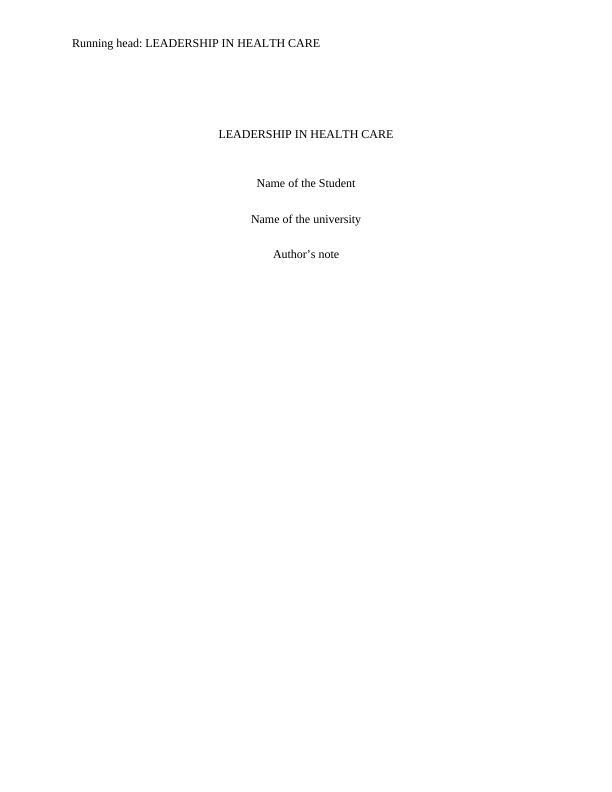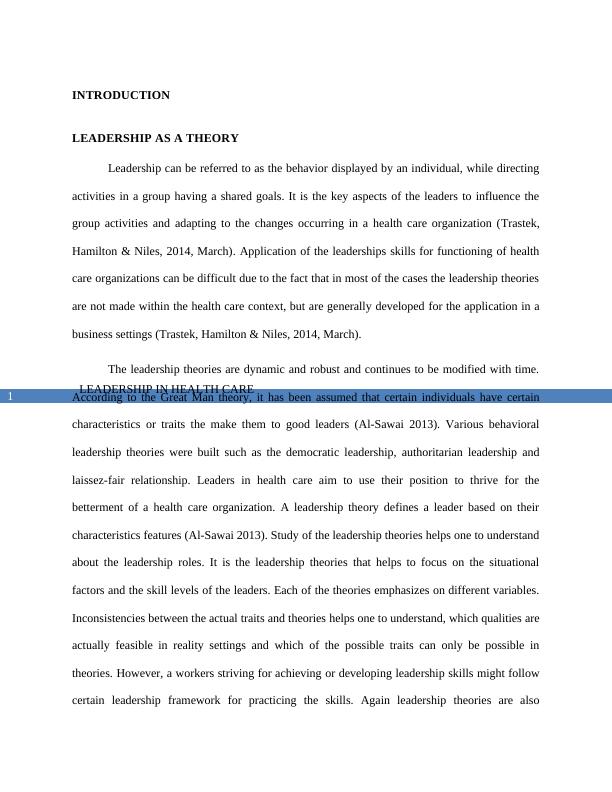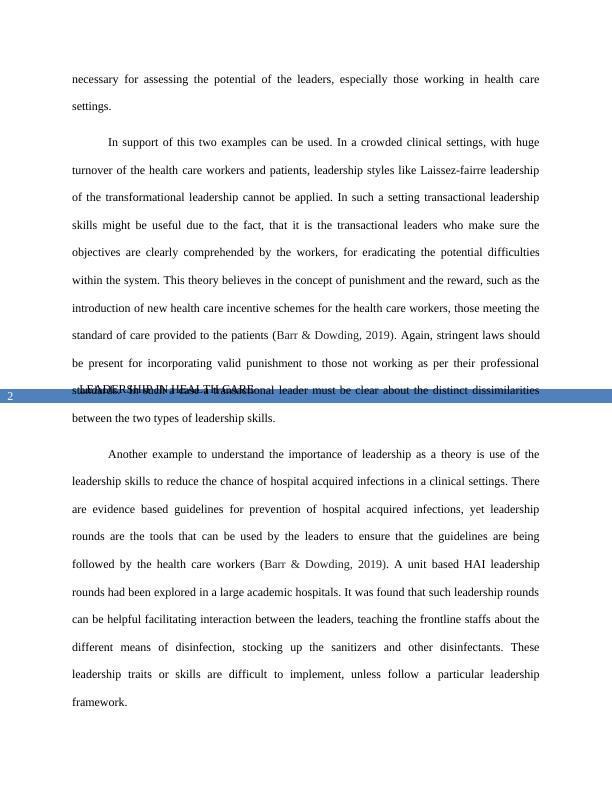Leadership in Health Care
Write a 3-5 page essay on the importance of understanding leadership as a theory in managing a healthcare-oriented organization, including the factors that should appear in a model of leadership and the relationships between the model's theoretical elements and the application of leadership principles. Cite and reference the textbook and two additional articles.
Added on 2022-12-20
About This Document
Leadership in Health Care
Write a 3-5 page essay on the importance of understanding leadership as a theory in managing a healthcare-oriented organization, including the factors that should appear in a model of leadership and the relationships between the model's theoretical elements and the application of leadership principles. Cite and reference the textbook and two additional articles.
Added on 2022-12-20
End of preview
Want to access all the pages? Upload your documents or become a member.



